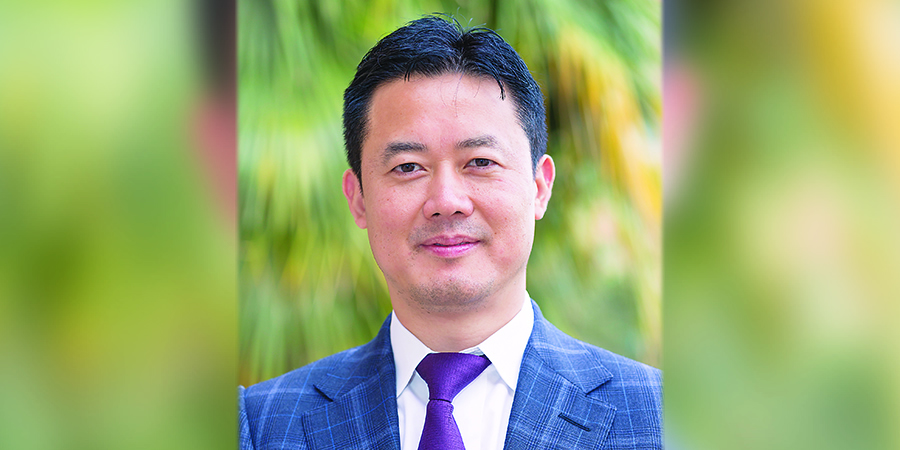By Charles Yang, president, Huawei Middle East
The advantages of 5G networks are quite obvious by now. 5G not only provides faster connectivity speeds to the end consumer, lower latency and a greater number of possible connections, but also empowers all industries and enables economic growth. Connected societies clearly stand to benefit significantly from the rollout of 5G. It is also why network security is brought more under the spotlight and becomes such a priority in the 5G era.
Today’s 5G networks are not only faster and more agile than 4G but have increased security features to ensure that users are more protected than ever before. We see this as a necessity for a world that relies increasingly upon the internet of things (IoT), AI, autonomous vehicle networks, big data analysis and more. Providers of 5G networks and solutions powered by 5G need to assure customers of the advanced security features.
From a technical perspective, 5G is definitely more secure than 4G. Connected customers will have an idea of the existing security and privacy measures in 4G and earlier generation networks. The same standards of legacy systems apply to 5G but have been enhanced with additional features, because what worked on legacy systems is not sufficient to meet the new security requirements and challenges being introduced today.
For example, traditional security architectures focus on the protection of voice and data, with common security features such as user identity management based on (U)SIM, mutual authentication between networks and users, and securing the path between communicating parties hop-by-hop. While these work for the traditional mobile networks that focus on enriching people’s lives through communication, 5G goes beyond serving individuals to empower vertical industries, from which numerous new services will emerge, all of which will have diverse security demands.
In response, 5G uses technologies such as an enhanced cryptographic algorithm, permanent user identity encryption, end-to-end security protection between PLMNs, integrity protection on the user plane over the air interface, and identification and defence against pseudo basestations. These technologies and protocols help fix the security vulnerabilities of 4G networks and enhance personal and corporate information security.
The robust security offered by 5G is not a coincidence. It was a result of careful planning and was inherent in the design of 5G architecture. As a leading global 5G vendor, Huawei focused considerably on the security aspect of 5G technologies over the last decade. We have been proactively involved in telecom cybersecurity standardization activities led by the likes of ITU-T, 3GPP and IETF. Additionally, we have partnered with mainstream security companies to promote the healthy development of digital industries that are empowered by secure 5G. This has led to numerous breakthroughs in the development of both 5G technology and securities developed to ensure security.
This was the result of beginning 5G research in 2009 and investing more than USD4 billion in R&D efforts around 5G and USD70 billion in overall R&D spending over the past decade. To date we have over 10,000 people working on 5G networks - excluding 5G devices - and have made 21,000 submissions to the 3GPP as the industry's largest contributor. Our 5G essential patents account for over 20 percent of the world total; the most of any vendor.
What must be remembered, though, is that 5G really is an ecosystem. Many links are involved for one piece of information to flow from one consumer to another, including devices, basestations, transmission equipment, routers, core networks, servers and more. Therefore, we must get every link right to ensure end-to-end security.
To this end, Huawei is an active member of over 400 standards organizations, industrial alliances and open source communities as 2019. These activities extend beyond just the 5G realm but do lend insight into 5G’s development. We have been a member of the board or executive committee in numerous organizations, including the IIC, IEEE-SA, OpenStack and many more. This has resulted in over 5,000 standards contributions in 2019 alone, bringing our total submitted standards contributions to nearly 60,000. We have also been granted 270 cyber security certificates, which include 46 Common Criteria (CC) certificates, plus 16 US Federal Information Processing Standards (FIPS) certificates, amongst many others.
In the Middle East region, our focus now is on using the security advantages of 5G to benefit the acceleration of digital transformation and help achieve the targets of the national visions and agendas. We have already worked with carriers and partners to explore 5G applications in dozens of industries, from intelligent connected vehicles to smart factories, smart healthcare, smart grids and so on.
As our founder Ren Zhengfei has said before, “We need to place cyber security and privacy protection at the top of our guiding principles.” By actively tackling the challenges of network security through alliances with governments, customers and partners, our industry can deliver the standard of security that users not only demand, but deserve.











